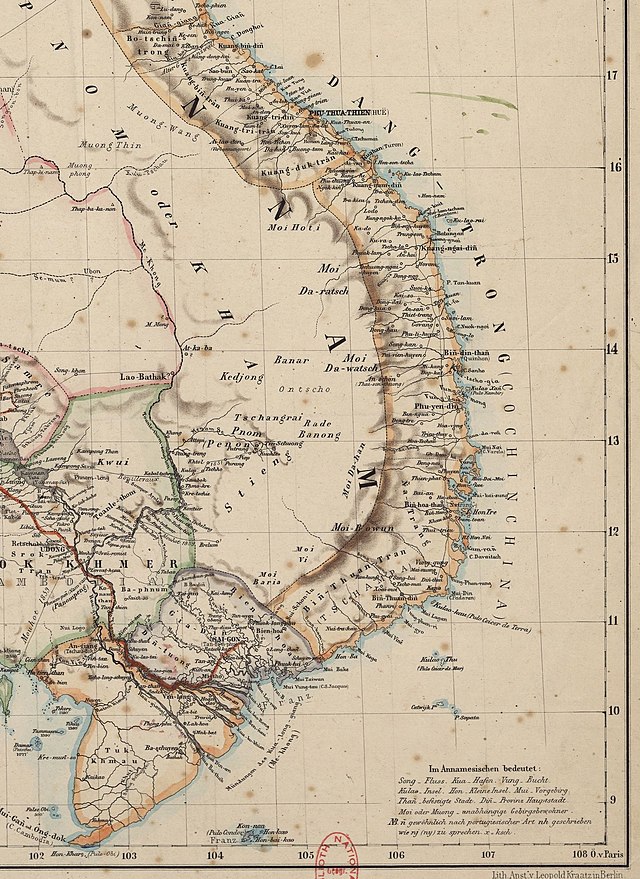Top Qs
Timeline
Chat
Perspective
Đàng Trong
Former realm in Vietnam From Wikipedia, the free encyclopedia
Remove ads
Đàng Trong (chữ Nôm: 唐冲,[1] lit. "Inner Circuit"), also known as Nam Hà (chữ Hán: 南河, "South of the River"), was the region of Vietnam south of the Gianh River, under the lordship of the Nguyễn clan, and later expanded through Vietnamese southward expansion. It was bordered to the north by Đàng Ngoài, ruled by the Lê–Trịnh.


Throughout the 17th century and most of the 18th century, the Nguyễn lords, though claiming loyalty to the Lê emperors in Thăng Long (Hanoi), ruled Đàng Trong as a de facto independent kingdom.[2] Nguyễn rulers titled themselves as Chúa (chữ Nôm: 主, lit. "Lord") instead of Vua (chữ Nôm: 𤤰, lit. "King") until Lord Nguyễn Phúc Khoát officially claimed the title Vũ Vương (chữ Nôm: 武王, lit. "Martial King") in 1744.[a]
Remove ads
Names
The terms Đàng Trong and Đàng Ngoài originated in the 1620s and were first recorded in the Dictionarium Annamiticum Lusitanum et Latinum by Alexandre de Rhodes.[3] Contemporary European sources referred to Đàng Trong as Cochinchina and its variants. Other foreigners also referred to it as the Kingdom of Quảng Nam (chữ Hán: 廣南國, Quảng Nam quốc) after the Quảng Nam Governorate where the important harbor Hội An (Faifo) located,[4] hence the Dutch term Quinam.
Remove ads
See also
![]() The dictionary definition of Đàng Trong at Wiktionary
The dictionary definition of Đàng Trong at Wiktionary
- Đàng Ngoài (Trịnh lords)
- Đàng Trên (Mạc lords)
Notes
- This action does not necessarily mean Nguyễn Phúc Khoát renounced his status as a nominal subject of Lê emperors. For an analogy, in 216 Emperor Xian of Han bestowed the nominal vassal king title "King of Wei" (魏王) upon Grand chancellor Cao Cao
References
Wikiwand - on
Seamless Wikipedia browsing. On steroids.
Remove ads
